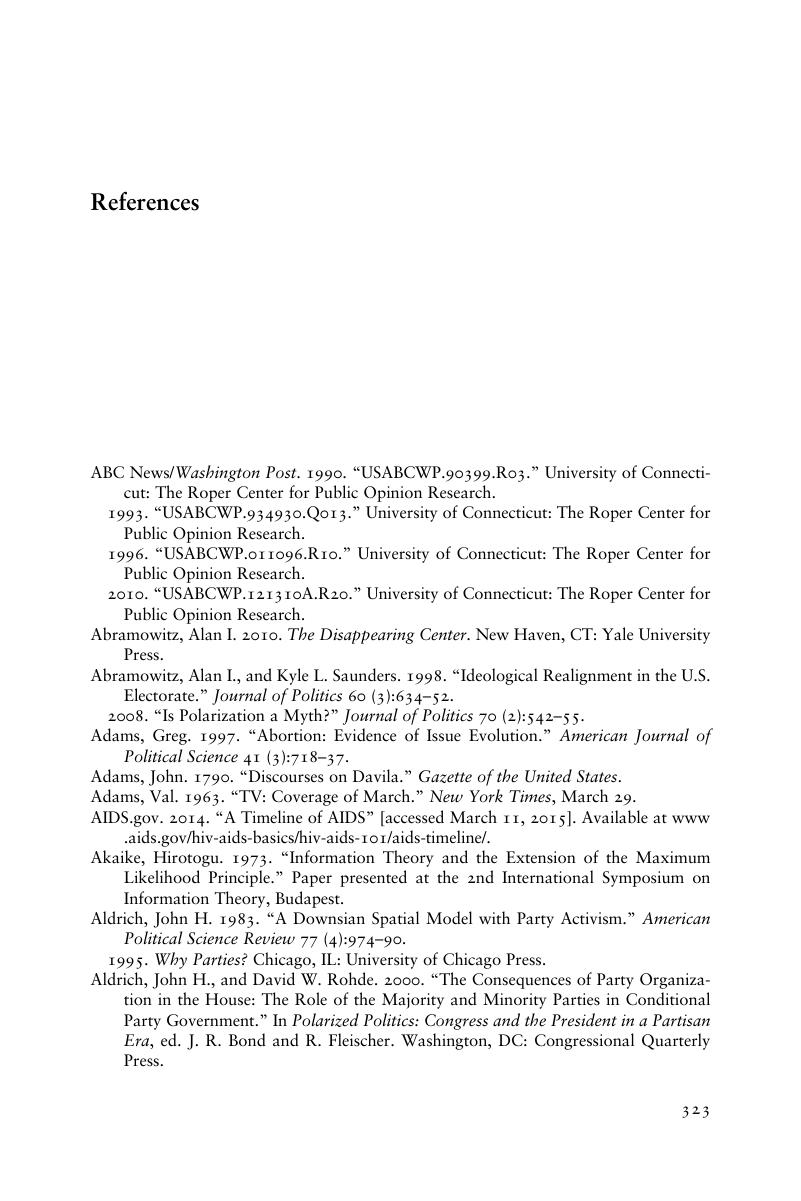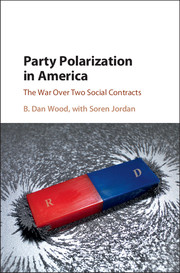Book contents
- Party Polarization in America
- Party Polarization in America
- Copyright page
- Dedication
- Dedication
- Contents
- Figures
- Tables
- Preface and Acknowledgments
- 1 Theoretical Perspectives on Party Polarization in America
- 2 Establishing the Founders’ Social Contract from the Constitutional Convention through George Washington
- 3 The Consequences of the Founders’ Social Contract from Reconstruction to the Great Depression
- 4 Forging the New Deal Social Contract from the Great Depression through World War II
- 5 The New Deal Social Contract through the 1970s
- 6 Polarization over the New Deal Social Contract from the 1970s to the Present
- 7 Are Americans Ideologically Polarized?
- 8 Elite Polarization and Democratic Representation
- 9 Polarization as the Norm of the American System
- Book part
- References
- Index
- References
References
Published online by Cambridge University Press: 30 August 2017
- Party Polarization in America
- Party Polarization in America
- Copyright page
- Dedication
- Dedication
- Contents
- Figures
- Tables
- Preface and Acknowledgments
- 1 Theoretical Perspectives on Party Polarization in America
- 2 Establishing the Founders’ Social Contract from the Constitutional Convention through George Washington
- 3 The Consequences of the Founders’ Social Contract from Reconstruction to the Great Depression
- 4 Forging the New Deal Social Contract from the Great Depression through World War II
- 5 The New Deal Social Contract through the 1970s
- 6 Polarization over the New Deal Social Contract from the 1970s to the Present
- 7 Are Americans Ideologically Polarized?
- 8 Elite Polarization and Democratic Representation
- 9 Polarization as the Norm of the American System
- Book part
- References
- Index
- References
Summary

- Type
- Chapter
- Information
- Party Polarization in AmericaThe War Over Two Social Contracts, pp. 323 - 360Publisher: Cambridge University PressPrint publication year: 2017

